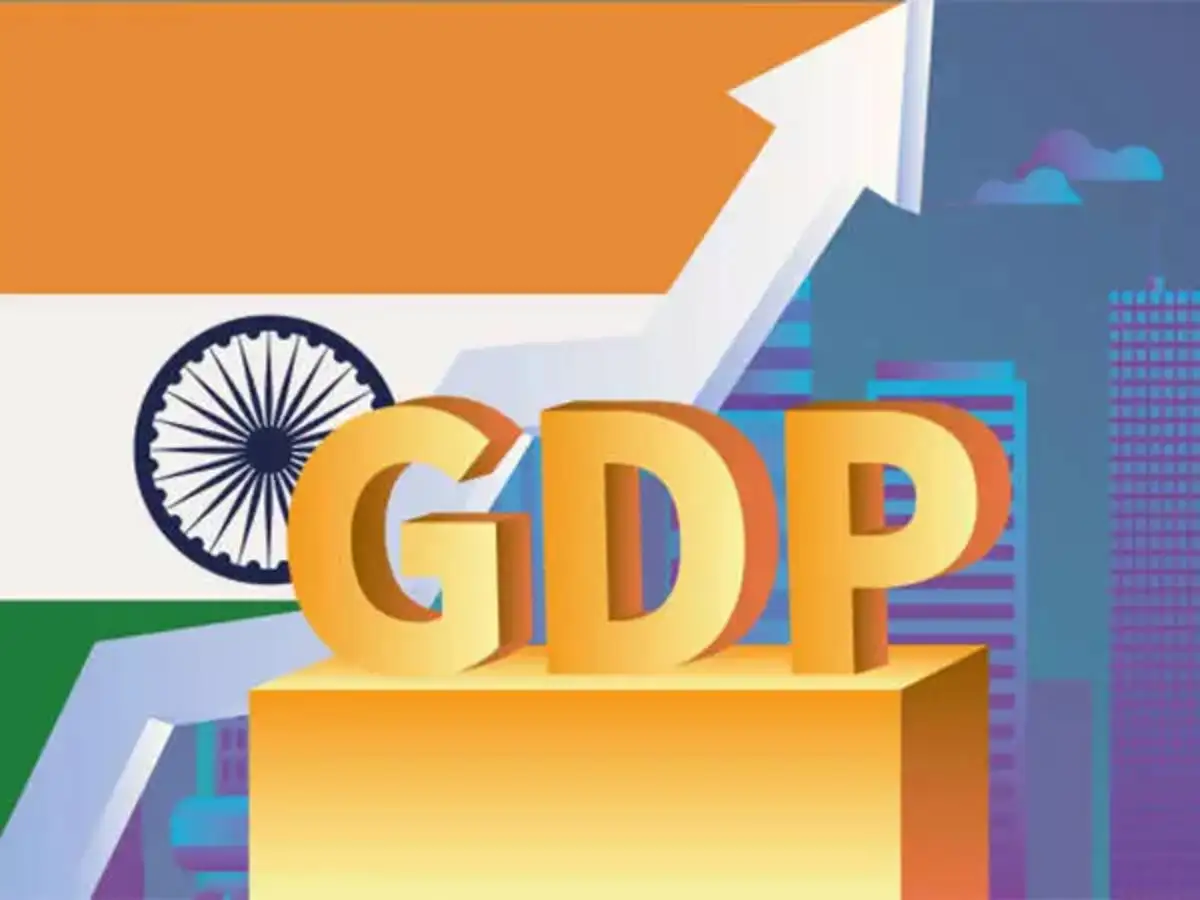India is poised to maintain its position as the world’s fastest-growing major economy, with Moody’s Ratings projecting a steady growth rate of 6.5% through 2027, according to the agency’s latest Global Macro Outlook 2026-27 report released on Wednesday. This optimistic forecast comes despite mounting concerns over potential U.S. tariff policies and persistent global economic uncertainties that have challenged emerging markets worldwide.
The rating agency’s comprehensive analysis underscores India’s remarkable economic resilience, driven by a combination of robust infrastructure investment, sustained consumer demand, and strategic export diversification. These factors are expected to counterbalance the challenges posed by cautious private sector capital spending and external headwinds that continue to affect global trade dynamics.
Build the future you deserve. Get started with our top-tier Online courses: ACCA, HESI A2, ATI TEAS 7, HESI EXIT, NCLEX-RN, NCLEX-PN, and Financial Literacy. Let Serrari Ed guide your path to success. Enroll today.
Navigating Tariff Challenges Through Export Diversification
One of the most striking aspects of India’s economic performance has been its ability to adapt swiftly to changing international trade conditions. Despite facing hefty U.S. tariffs of up to 50% on certain export products, Indian exporters have demonstrated remarkable agility by successfully redirecting their shipments to alternative markets. This strategic pivot has yielded impressive results, with India’s overall exports climbing 6.75% in September, even as shipments to the United States experienced an 11.9% decline during the same period.
This export resilience reflects the growing sophistication of India’s trade strategy and the diversification of its export destinations. Indian businesses have increasingly turned their attention to markets across Southeast Asia, the European Union, and the Middle East, reducing their dependence on any single trading partner. This geographical diversification has proven crucial in maintaining export momentum despite protectionist measures in traditional markets.
The success of this redirection strategy highlights the competitive advantages that Indian exporters possess, including cost efficiency, manufacturing capabilities, and the ability to quickly adapt to new market requirements. Sectors such as pharmaceuticals, textiles, information technology services, and engineering goods have been particularly successful in finding new international buyers, demonstrating the breadth and depth of India’s export portfolio.
Infrastructure Investment as a Growth Catalyst
A cornerstone of India’s projected economic expansion is the government’s continued emphasis on infrastructure development. The country has embarked on an ambitious infrastructure modernization program that spans transportation networks, digital connectivity, renewable energy installations, and urban development projects. These investments are not only creating immediate economic activity through construction and related services but are also laying the foundation for long-term productivity gains.
The National Infrastructure Pipeline, which encompasses thousands of projects across various sectors, represents one of the most comprehensive infrastructure initiatives undertaken by any emerging economy. This includes the expansion of highways and expressways, development of dedicated freight corridors, modernization of airports and seaports, and the creation of industrial corridors that connect manufacturing hubs with transportation networks.
Particularly significant is the government’s focus on digital infrastructure, with initiatives aimed at expanding broadband connectivity to rural areas, developing smart cities, and creating digital payment systems that facilitate financial inclusion. These efforts are transforming India’s economic landscape, enabling businesses to operate more efficiently and opening new opportunities for entrepreneurship and innovation across the country.
The infrastructure push is also generating substantial employment opportunities, both directly in construction and related industries, and indirectly through the economic activities that improved infrastructure enables. This employment generation is crucial for absorbing India’s growing workforce and maintaining the momentum of consumer demand that underpins economic growth.
Consumer Demand: The Domestic Engine of Growth
Strong consumer demand remains a fundamental pillar of India’s economic resilience. With a population exceeding 1.4 billion people and a rapidly expanding middle class, India’s domestic market presents enormous opportunities for businesses across sectors. The Moody’s report emphasizes that domestic demand continues to serve as the primary growth engine, providing a buffer against external shocks and reducing vulnerability to global economic fluctuations.
Several factors are contributing to robust consumer spending in India. Rising incomes, particularly in urban areas and among the emerging middle class, are enabling increased consumption of both essential and discretionary goods. The penetration of organized retail and e-commerce platforms has made a wider range of products accessible to consumers across the country, including in smaller cities and towns that were previously underserved.
Furthermore, India’s young demographic profile is a significant advantage. With a median age considerably lower than most developed economies and many emerging markets, India benefits from a large and growing working-age population. This demographic dividend translates into a substantial consumer base with evolving preferences and increasing purchasing power, particularly as employment opportunities expand and incomes rise.
The government’s focus on financial inclusion initiatives has also played a role in supporting consumer demand. Programs that have brought millions of previously unbanked individuals into the formal financial system have facilitated access to credit, savings mechanisms, and digital payment systems, enabling more people to participate fully in the economy.
Monetary Policy and Inflation Management
India’s economic stability has been significantly supported by prudent monetary policy management by the Reserve Bank of India (RBI). The central bank’s careful balancing of growth objectives with inflation control has created favorable conditions for sustained economic expansion. In October, the RBI maintained its repo rate steady, signaling a cautious approach to monetary policy in an environment characterized by subdued inflation and strong growth momentum.
This neutral-to-easy monetary policy stance has been crucial in maintaining liquidity in the financial system and keeping borrowing costs at levels that support economic activity without fueling excessive inflation. The low inflation environment, in particular, has been beneficial for preserving the purchasing power of consumers and providing stability for businesses planning long-term investments.
The RBI’s approach reflects a sophisticated understanding of India’s economic dynamics and the external challenges facing the country. By maintaining policy flexibility and responding appropriately to evolving conditions, the central bank has helped create an environment conducive to sustainable growth. This policy framework has also contributed to maintaining investor confidence, as evidenced by strong international capital inflows into India’s financial markets.
One decision can change your entire career. Take that step with our Online courses in ACCA, HESI A2, ATI TEAS 7, HESI EXIT, NCLEX-RN, NCLEX-PN, and Financial Literacy. Join Serrari Ed and start building your brighter future today.
International Capital Flows and Investor Sentiment
Strong international capital inflows have been a notable feature of India’s recent economic performance. Positive investor sentiment toward India, driven by its growth prospects, improving ease of doing business, and political stability, has resulted in substantial foreign investment in both equity and debt markets. These capital flows have helped cushion external shocks, maintain liquidity in financial markets, and support the stability of the rupee.
Foreign direct investment (FDI) into India has remained robust, with investors attracted by the country’s large and growing market, improving infrastructure, and government initiatives aimed at facilitating business operations. Sectors such as services, computer software and hardware, telecommunications, construction development, and automobiles have been particularly attractive to foreign investors.
The consistent inflow of foreign portfolio investment into India’s stock markets reflects the confidence that international investors have in the country’s corporate sector and long-term growth trajectory. India’s inclusion in major global bond indices and the continued interest from sovereign wealth funds and institutional investors underscore the country’s growing prominence in global investment portfolios.
The Challenge of Private Sector Investment
Despite the overall positive outlook, Moody’s report identifies a notable challenge: the private sector’s continued caution regarding large-scale business investments. While infrastructure investment by the government has been robust, private sector capital expenditure remains subdued, reflecting lingering concerns about demand predictability, regulatory uncertainties, and global economic conditions.
This hesitation in private investment is significant because private sector capital formation is crucial for creating productive capacity, generating employment, and driving innovation. The government has implemented various measures to encourage private investment, including production-linked incentive schemes, improvements in the ease of doing business, and reforms in labor and land laws. However, translating these initiatives into substantial increases in private capital spending remains an ongoing challenge.
Encouragingly, there are signs that private sector sentiment is gradually improving. Corporate balance sheets have strengthened, profitability has improved for many companies, and capacity utilization rates in several industries have increased, potentially setting the stage for a pickup in investment activity. The success of government infrastructure projects in improving logistics and connectivity may also encourage private investors to commit capital to expansionary projects.
Global Economic Context and India’s Comparative Performance
India’s projected 6.5% growth rate stands in stark contrast to the more modest expansion expected in many other parts of the world. Moody’s forecast for global GDP growth of approximately 2.5%-2.6% in 2026 and 2027 reflects an uneven recovery across different regions, with advanced economies expected to grow at just 1.5% while emerging markets as a group will expand at close to 4%.
The United States economy, according to Moody’s analysis, is experiencing slower but stable momentum, supported by modest consumer spending and significant investment in artificial intelligence technologies. The report notes that narrow credit spreads, robust equity markets, and ample funding liquidity have created benign financial conditions. Fiscal stimulus, more accommodative monetary policy, and regulatory easing could extend the U.S. credit cycle into 2026, though risks may increase as the cycle matures.
In Europe, Moody’s observed modest improvement driven by employment gains, wage stability, and monetary policy easing by the European Central Bank. Investments in infrastructure and green technology, particularly Germany’s fiscal push in defense and public projects, are expected to support regional growth. However, European economies continue to face structural challenges, including demographic headwinds and the need for significant transitions in energy systems and industrial processes.
China’s economy, meanwhile, is projected to grow at 5% in 2025, supported by government stimulus and strong exports. However, Moody’s notes that domestic fundamentals remain soft, with uneven consumption patterns, weak corporate lending, and shrinking fixed asset investment. The agency expects China’s real GDP growth to gradually slow to 4.2% by 2027, reflecting the challenges of rebalancing from an investment-driven to a consumption-driven growth model while managing debt levels and demographic transitions.
Sectoral Drivers of Indian Growth
India’s economic growth is expected to be broad-based, with contributions from multiple sectors. The services sector, which accounts for more than half of India’s GDP, continues to be a major driver, with particular strength in information technology services, financial services, and professional services. India’s IT sector has maintained its global competitiveness and continues to benefit from digital transformation initiatives worldwide.
The manufacturing sector is also expected to play an increasingly important role, supported by government initiatives such as Make in India and the production-linked incentive schemes designed to boost domestic manufacturing capabilities. There is growing interest in establishing India as a manufacturing hub for sectors ranging from electronics and semiconductors to pharmaceuticals and automobiles, partly driven by companies seeking to diversify their supply chains away from concentration in any single country.
Agriculture, while contributing a smaller share to GDP, remains crucial for employment and rural incomes. Good monsoon conditions, improved irrigation infrastructure, and government support for farmers are expected to sustain agricultural output. The agricultural sector’s performance has important multiplier effects on rural consumption and overall economic stability.
Policy Challenges and Opportunities
Sustaining the projected growth trajectory will require continued focus on several policy priorities. Education and skill development are crucial for ensuring that India’s workforce can meet the demands of a rapidly evolving economy. There is a need for greater alignment between educational outcomes and market requirements, particularly in technical and vocational fields.
Labor market reforms that facilitate job creation while protecting worker interests remain important. The transition of workers from informal to formal employment, where they have access to social security benefits and better working conditions, is both an economic and social priority.
Environmental sustainability is another area requiring attention. As India grows, managing the environmental impact of that growth through investments in renewable energy, pollution control, and sustainable urban development will be essential for long-term prosperity and quality of life.
Finally, continuing efforts to improve governance, reduce bureaucratic obstacles, and enhance the ease of doing business will be important for attracting the private investment needed to complement public infrastructure spending.
Conclusion
Moody’s projection of 6.5% growth for India through 2027 reflects confidence in the country’s economic fundamentals and its ability to navigate global challenges. The combination of robust infrastructure investment, strong domestic consumer demand, export diversification, prudent monetary policy, and positive investor sentiment provides a solid foundation for sustained expansion.
While challenges remain, particularly in catalyzing greater private sector investment and managing the complexities of operating in a uncertain global environment, India’s economic outlook remains among the most promising in the world. As the fastest-growing major economy, India is not only improving living standards for its own population but also contributing significantly to global economic growth and offering opportunities for international businesses and investors.
The path ahead will require continued policy focus, adaptability to changing circumstances, and sustained commitment to reforms that enhance productivity and competitiveness. However, with its demographic advantages, democratic institutions, entrepreneurial culture, and increasingly sophisticated economic management, India appears well-positioned to realize its growth potential in the years ahead.
Ready to take your career to the next level? Join our Online courses: ACCA, HESI A2, ATI TEAS 7 , HESI EXIT , NCLEX – RN and NCLEX – PN, Financial Literacy!🌟 Dive into a world of opportunities and empower yourself for success. Explore more at Serrari Ed and start your exciting journey today! ✨
Track GDP, Inflation and Central Bank rates for top African markets with Serrari’s comparator tool.
See today’s Treasury bonds and Money market funds movement across financial service providers in Kenya, using Serrari’s comparator tools.
photo source: Google
By: Montel Kamau
Serrari Financial Analyst
14th November, 2025
Article, Financial and News Disclaimer
The Value of a Financial Advisor
While this article offers valuable insights, it is essential to recognize that personal finance can be highly complex and unique to each individual. A financial advisor provides professional expertise and personalized guidance to help you make well-informed decisions tailored to your specific circumstances and goals.
Beyond offering knowledge, a financial advisor serves as a trusted partner to help you stay disciplined, avoid common pitfalls, and remain focused on your long-term objectives. Their perspective and experience can complement your own efforts, enhancing your financial well-being and ensuring a more confident approach to managing your finances.
Disclaimer: This article is for informational purposes only and does not constitute financial advice. Readers are encouraged to consult a licensed financial advisor to obtain guidance specific to their financial situation.
Article and News Disclaimer
The information provided on www.serrarigroup.com is for general informational purposes only. While we strive to keep the information up to date and accurate, we make no representations or warranties of any kind, express or implied, about the completeness, accuracy, reliability, suitability, or availability with respect to the website or the information, products, services, or related graphics contained on the website for any purpose. Any reliance you place on such information is therefore strictly at your own risk.
www.serrarigroup.com is not responsible for any errors or omissions, or for the results obtained from the use of this information. All information on the website is provided on an as-is basis, with no guarantee of completeness, accuracy, timeliness, or of the results obtained from the use of this information, and without warranty of any kind, express or implied, including but not limited to warranties of performance, merchantability, and fitness for a particular purpose.
In no event will www.serrarigroup.com be liable to you or anyone else for any decision made or action taken in reliance on the information provided on the website or for any consequential, special, or similar damages, even if advised of the possibility of such damages.
The articles, news, and information presented on www.serrarigroup.com reflect the opinions of the respective authors and contributors and do not necessarily represent the views of the website or its management. Any views or opinions expressed are solely those of the individual authors and do not represent the website's views or opinions as a whole.
The content on www.serrarigroup.com may include links to external websites, which are provided for convenience and informational purposes only. We have no control over the nature, content, and availability of those sites. The inclusion of any links does not necessarily imply a recommendation or endorsement of the views expressed within them.
Every effort is made to keep the website up and running smoothly. However, www.serrarigroup.com takes no responsibility for, and will not be liable for, the website being temporarily unavailable due to technical issues beyond our control.
Please note that laws, regulations, and information can change rapidly, and we advise you to conduct further research and seek professional advice when necessary.
By using www.serrarigroup.com, you agree to this disclaimer and its terms. If you do not agree with this disclaimer, please do not use the website.
www.serrarigroup.com, reserves the right to update, modify, or remove any part of this disclaimer without prior notice. It is your responsibility to review this disclaimer periodically for changes.
Serrari Group 2025












